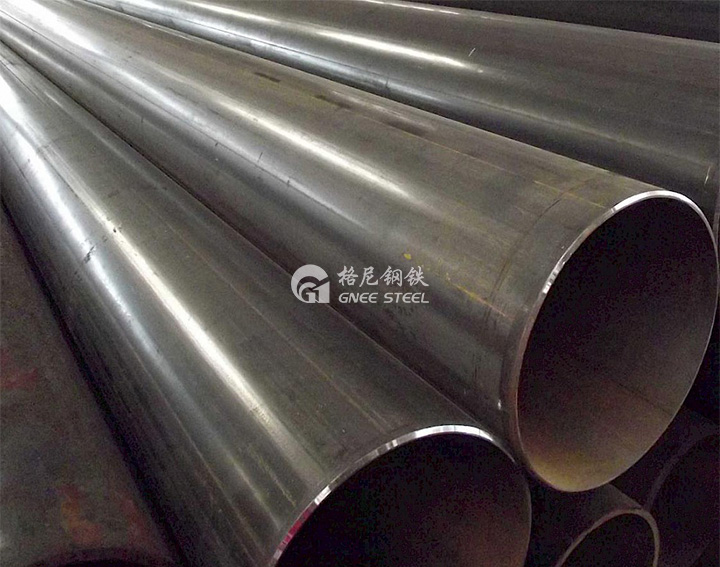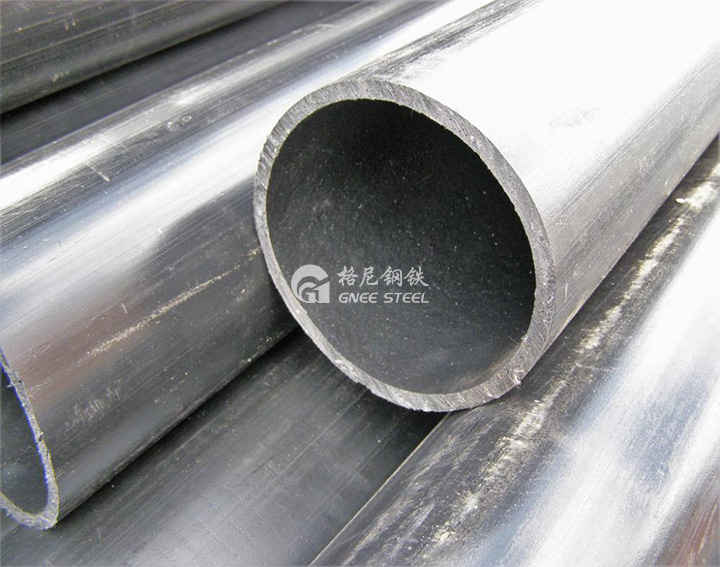A335 P5 pipe
A335 P5 steel pipe is mainly composed of alloy elements such as chromium (Cr) and molybdenum (Mo). Gnee has own factory and 20 exquisite production equipment, supporting customization and processing services. Provide one-stop A335 P5 steel pipe shopping solution. Get a quote now.
Gnee supplies ASTM A335 P5 steel pipes of a wide range sizes waiting for you to choose.

With excellent mechanical properties, ASTM A335 P5 pipe is widely used in the following fields:
- Boilers and heat exchangers: Used to make boilers and heat exchangers
- Oil and natural gas industry: Used in oil well pipes, oil pipelines, natural gas pipelines and oil processing equipment
- Chemical industry: Used in pipeline systems, reactors, heat exchangers, distillation towers
- Power industry: Used to transport steam and high-temperature hot water

| Compositions | Data |
| Carbon(max.) | 0.15 |
| Manganese | 0.30-0.60 |
| Phosphorus(max.) | 0.025 |
| Silicon(max.) | 0.50 |
| Chromium | 4.00-6.00 |
| Molybdenum | 0.45-0.65 |
| Other Elements | … |
| Properties | Data |
| Tensile strength, min, (MPa) | 415 Mpa |
| Yield strength, min, (MPa) | 205 Mpa |
| Elongation, min, (%), L/T | 30/20 |
| NPS [DN] Designator | Tolerance, % from Specified | |
| Over | Under | |
| 1/8 to 2 1/2 [6 to 65] incl., all t/D ratios | 20.0% | 12.5% |
| Above 2 1/2 [65], t/D < or = 5% | 22.5% | 12.5% |
| Above 2 1/2 [65], t/D > 5% | 15.0% | 12.5% |
| (t = Specified Wall Thickness; D = Specified Outside Diameter) | ||

In addition, our ASTM A335 P5 pipe has been successfully exported to more than 60 countries such as Vietnam, Malaysia, Indonesia, Pakistan, UAE, and South Korea, etc. Many regular customers visit our company and factory and make multiple orders.

Gnee can provide the following measurement services for ASTM A335 P5 pipes:
1. Dimensional measurement: Measure the dimensional parameters such as length, width, and thickness by measuring instruments to ensure the pipe is qualified and meets the design requirements.
2. Surface measurement: Measure parameters such as flatness, unevenness, and surface roughness of the A335 P5 pipe surface to help ensure that the quality and surface state of the pipe meet the requirements.
3. Thickness measurement: Use a thickness measuring instrument to accurately measure the thickness of the ASTM A335 P5 pipe to ensure that it meets the design requirements.
4. Material measurement: Use material analysis instruments to measure the chemical composition and mechanical properties of the product to ensure that the quality and performance meet the requirements.
5. Bending and Deformation Measurements:The degree of bending and deformation of the steel pipe is measured and monitored by using tools such as bending measuring instruments and displacement sensors to ensure that it is within the allowable range.
Gnee can customize the size and shape of steel pipes for your project according to specific project needs. The custom design of the ASTM A335 P5 pipe is carried out by a professional engineer and design team. Based on the requirements and constraints of the project, they will use calculation and simulation tools, combined with experience and technical knowledge, to optimize the steel pipe design to meet the specific needs of your engineering.
● According to the strength requirements of structural design, adjust the thickness, width, and length of ASTM A335 P5 pipes.
● The shape of the steel pipe can be designed according to the characteristics of the project.
● If you consider the convenience of installation and maintenance, we can also add openings for easy operation in the design for areas that require frequent maintenance.
Purchasing Gnee ASTM A335 P5 pipe can provide the following deep processing services. We can customize according to the specific needs of customers to meet the requirements.
Cutting service: ASTM A335 P5 pipe can be custom cut to obtain the desired shape and size according to the needs of customers. For example, flame cutting, plasma cutting, laser cutting, etc., can cut steel pipes into required blocks, special-shaped parts.
Bending and forming:A335 P5 pipes are bent and formed by stress application and appropriate processes to obtain the desired shape.
Welding service: ASTM A335 P5 tube can be subjected to various types of welding services, including manual arc welding, gas-shielded welding, laser welding, etc.
Turning and machining of holes: Turning and machining of holes in ASTM A335 P5 pipes by using machining equipment. These processes produce smooth surfaces, precise holes and threads to meet specific assembly requirements.
Surface treatment: In order to improve the corrosion resistance and aesthetics of the steel pipe, surface treatment can be carried out. This includes methods such as spraying, hot-dip galvanizing, electroplating, etc. to add a protective layer and provide corrosion resistance.
Gnee ASTM A335 P5 pipes can provide the following testing services through third-party testing agencies. These third-party testing services can provide independent, objective verification that P5 pipes comply with relevant standards and regulations.
Material chemical composition analysis: Through chemical composition analysis, determine whether the composition of the steel pipe meets the standard requirements.
Mechanical performance test: Mechanical performance test includes tensile test, impact test, bending test, etc., which determine whether the mechanical properties such as strength, toughness and ductility of products meet the specified requirements.
Metallographic testing: Through metallographic testing, check the structure, grain size, non-metallic inclusions, etc. of ASTM A335 P5 pipes to evaluate their quality and performance.
Corrosion performance test: Through the corrosion performance test, evaluate the corrosion resistance of ASTM A335 P5 pipes, including salt spray corrosion resistance, chemical corrosion resistance, etc.
Hardness test: Hardness test is used to measure the hardness of ASTM A335 P5 pipe, and its strength and wear resistance can be evaluated according to the hardness value.
Ultrasonic flaw detection: Ultrasonic flaw detection is used to detect internal defects of pipes, such as cracks, pores, inclusions, etc.

















